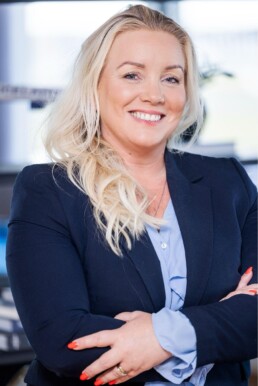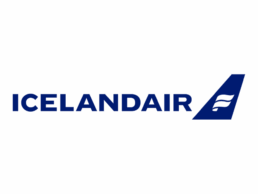From silos to synergy: Helga Huld’s Customer-Experience lift-off at Icelandair
When Helga Huld Bjarnadottir became Director Customer Experience & Loyalty at Icelandair in 2022, customer focus was everywhere—yet nowhere truly connected. Separate teams optimised isolated touch-points, collected data and launched ideas, but without a single, shared framework.
“I just needed to gather everything we had and create something sustainable out of it.”
Her mission: convert scattered enthusiasm into one clear strategy, structure and rhythm that every employee could rally behind.
Who is Helga?
Raised in Iceland’s service industry, Helga’s customer mindset formed early—working in the hotel industry and serving guests long before she joined the airline in 2001. Inside Icelandair she spent two decades within commercial leadership roles in revenue management and product & service development before stepping into CX leadership. That commercial grounding proved essential when she needed to explain customer decisions in hard-business terms:
“You need to have a deep understanding of the company, where the company is coming from and speak the language your stakeholders understand.”


Understanding the brand
Icelandair is the Icelandic airline offering flights to, from, via and within Iceland. With Iceland as hub and home, their core business is built around their international route network and the unique geographical location of the country which makes Iceland the perfect connecting hub between Europe and North America. Approximately 4 million passengers a year are travelling with Icelandair.
The challenge: Fragmentation & silos
Helga inherited two separate departments—Product & Loyalty and Customer Experience & Development—each with its own metrics and roadmap. Elsewhere in the organisation, operational and digital teams improved individual moments but not the end-to-end journey. Plenty of data was collected—NPS, CSAT, post-flight surveys—but teams seldom worked cross-functionally, so insights rarely turned into coordinated action.
The solution: Structure, ownership, momentum
Helga followed a five-step playbook.
1 | Merge teams and clarify roles
- Consolidated the two separate departments into one team.
- Introduced a Customer Success Manager dedicated to measurements, KPIs, dashboards and post-flight surveys—turning insight into action.
- Established a combined role for each major stage of the customer journey (Digital, Airport, Inflight, Communications), pairing CX and Product responsibilities: each CX Manager/Product Manager is responsible for both driving customer strategy and insights (CX) and owning the development and improvement of their specific touchpoint (Product). This structure broke down silos and aligned customer strategy with execution
- Conducted workshops with other departments to clarify roles, responsibilities, and the best ways to cooperate and communicate.
2 | Build one overarching CX strategy
- Four workshops in two days gathered sixty colleagues—from cabin crew to C-suite—to fuse existing materials, research and brand values.
- With guidance from CX Unraveled, they distilled a single customer ambition and a set of emotional pillars that define the desired customer experience.
- The story rolls out through an internal video, e-learning, onboarding and regular refresh sessions so every employee speaks the same language.
3 | Create formal executive governance
- Helga established the Service Committee as the top-level forum for customer decisions.
- Meeting at least quarterly, the CEO, CFO, CCO, COO and other C-executives hold voting rights; directors join as advisors.
- Each proposal arrives with a pre-read covering costs, revenue impact and CX effect, giving customer topics real “seat-at-the-table” status.
4 | Activate a network of 40 CX ambassadors
- Volunteers from finance, operations, airport services and cabin crew form a cross-functional community.
- Kick-off sessions introduced the CX strategy, live projects and clarified exactly what was expected from each ambassador.
- They meet regularly online or in person to share updates, unblock small issues and cascade the bigger CX story to their teams.
- Quick wins—like fixing a boarding-gate pain point on the spot—keep momentum high.
5 | Turn measurement into action
- Beyond NPS, Icelandair now tracks CSAT at every touch-point (digital, call centre, airport, inflight).
- Post-flight surveys include questions on the emotional pillars (“Did you feel cared for?”) and progress on CX strategy is measured and monitored.
- Real-time dashboards flash across office screens; results feed straight into the ambassador network and the Service Committee.
Lessons learned & advice for CX professionals
Helga turns her experience into six practical lessons you can put to work straight away:
- Customer Experience needs to be strategic, not just operational
Moving CX from being a reactive function to a strategic pillar, overseeing end-to-end processes and aligning them with business goals - Secure executive sponsorship early—and keep it warm. A CX vision only flies when the C-suite supports it and allocates budget, resources, and airtime to it at every decision table.
- Translate CX into business outcomes for each stakeholder. Speak the language of your stakeholders: rephrase “happy customers” into reduced call-centre volumes for Operations, higher ancillary sales for Commercial or lower churn for Loyalty.
- Mix data with emotion. Track NPS and CSAT, but also ask feeling-based questions (e.g. “Did you feel cared for?”) and gather customer stories to surface gaps that numbers alone hide.
- Grow an internal movement. Ambassador programmes, lunch-and-learn sessions and concrete “CX fixes” keep energy high long after the initial workshops.
- Be stubbornly patient. Culture change in a complex operation takes years; celebrate quick wins, share progress and keep pushing.
“Sometimes you just need outsiders to spark new ideas—but it’s the insiders who must carry the torch.”
Final thoughts
For Helga, the biggest challenge was that people often prefer the comfort of what they know. Change takes time, even when it’s built on solid knowledge and experience. Not every idea landed right away — some need simplification, others more time to gain traction. “You have to lead in a human way,” she says, “balancing structure with understanding so people feel part of the journey.”
It’s this approach that makes her proud of the CX foundation she built is“very sustainable” despite later organisational tweaks. Today, Icelandair has clear ownership, common metrics and an employee network that keeps the customer voice alive. Having recently moved on from the airline, she leaves behind a strong foundation of collaboration and clarity that continues to shape the customer experience.